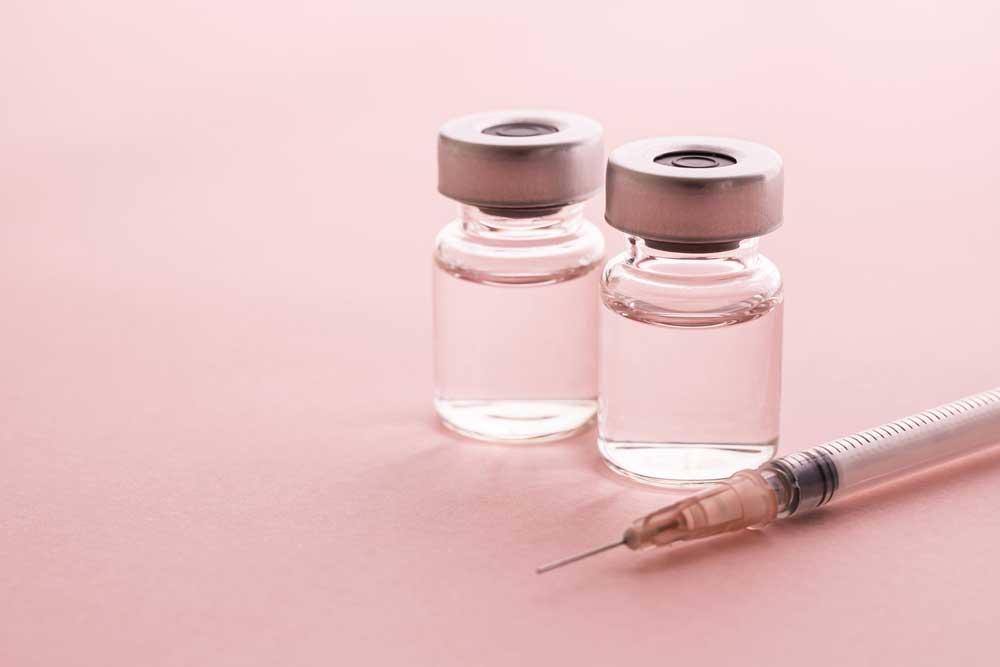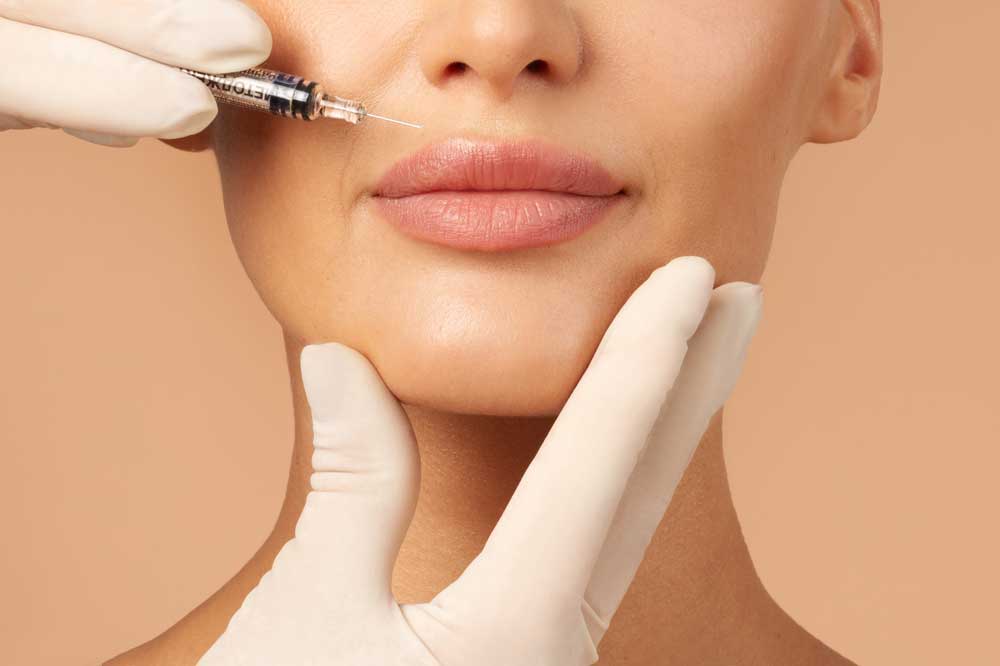Not all tattoos are created equal, nor are tattoo removal technologies. What was once an arduous process usually consisting of invasive excision surgery has now become an effective and efficient treatment with the advent of laser technologies. Dr. Lezaic and her team at Laser Skin Solutions Jacksonville in Jacksonville Beach, FL is proud to offer the newest laser technologies that yield faster and better results.
How Long Does the Tattoo Removal Process Take?
There are many variables involved in answering this question. Treatment time will vary depending on the depth of tattoo pigment, the size of the tattoo, and the degree of improvement you are looking for. Other factors influence the treatment as well, including age and general health.
Tattoo removal typically requires multiple treatment sessions. You will need to wait several weeks between sessions for your body to heal and flush out the ink particles created by the laser. However, the advent of shorter pulse duration lasers has made the process much more efficient, requiring fewer sessions. For most patients, the ink appears lighter immediately after the first session.
How Does Tattoo Removal Work?
In decades past, options for tattoo removal were limited. The only true options were excision surgery or carbon dioxide lasers, which often left behind significant scarring. Today, laser treatment is the safest, least intrusive, and most convenient option available.
The treatment begins when a powerful laser penetrates the first two layers of skin to break up the tattoo ink into pigment particles. The immune system dispatches white blood cells to flood the area, surrounding and removing the particles through the skin. The immune response remains activated between sessions, allowing the body to heal and prepare for another round. The process is continued, trading off between laser treatment and healing breaks until the ink is gone completely.
What’s in Tattoo Ink?
Tattoo ink basically consists of two parts: a carrier liquid and a colorant. The carrier solution is typically made from water, witch haze, glycerin, or alcohol. The colorant is usually either a dye or a pigment. Pigments are made from metals, which means they are stable and do not require a chemical reaction within the body to remain permanent. However, dyes do rely on a chemical reaction with the skin to remain permanent.
The Role of the Immune Response
Your immune system is designed to wage war against intruders such as microorganisms and other foreign bodies that make their way into your bloodstream. Anytime the body recognizes a particle or organism as foreign it releases white blood cells to mount an attack. While this is what keeps our bodies strong and resilient, it is also what gives tattoos their permanency.
When a tattoo is placed on the skin, these white blood cells, also called macrophages, attempt to “eat” the tattoo ink. Because the particles are too large for them to ingest, they aren’t able to eliminate them. However, they continue to surround the area in the hopes that they will eventually be able to do their job.
When they die off, new ones arrive to take their place. This continuous activity is what keeps the ink in place (and ultimately what removes it when the laser breaks these particles into more manageable sizes).
Picosecond Versus Nanosecond Lasers: What’s the Difference?
The type of laser used for tattoo removal plays a large role in the duration of treatment sessions. Laser systems featuring short pulse durations are required for the process – anything below about 30 nanoseconds is safe. Thus, the two main types of lasers used are categorized as nanosecond and picosecond lasers. They differ mostly in the way they operate and their spot sizes (meaning how large a “spot” of pigment they can target).
Picosecond lasers work better on bright colors, while nanosecond lasers are more effective on darker pigments. At Laser Skin Solutions Jacksonville, Dr. Lezaic offers a combination of companion laser treatments to meet the needs of nearly every patient with better results.
About Nanosecond Lasers
Nanosecond lasers have very powerful beams, running at a speed of about a billionth of a second. These are the standard lasers used for removing tattoo pigments from the skin. It has been proven safe and efficient, with less time needed in session than previous technologies.
Nanosecond lasers are best for removing larger particles of ink from the skin, as it has a larger spot size. This helps the laser cover a broader area, making the process brief and convenient. These lasers are especially good at removing darker pigments.
About Picosecond Lasers
Evolving from nanosecond lasers are the picosecond lasers. These produce an even shorter pulse duration, emitting beams at one-trillionth of a second. Often, picosecond lasers are used to finish up where nanosecond lasers left off. Because of their power and accuracy, picosecond lasers are more suitable for small-sized tattoos, or for cleaning up color pigments left behind from nanosecond laser treatment.
Laser Treatments We Offer
Laser Skin Solutions Jacksonville is the first practice in Florida to offer the Cutera Enlighten laser tattoo removal system. In addition, Dr. Lezaic has over 14 years of experience using a comprehensive spectrum of lasers, treating over 10,000 tattoos. Our clinic is the first in the state to offer both of the picosecond lasers available on the market.
Enlighten
This is the first system available that offers both nanosecond and picosecond pulse durations within one system. It is calibrated to the ideal wavelengths, energy levels, and spot sizes) for removing tattoo pigment from the skin. It’s dual wavelengths and dual pulse durations treats all types of tattoo ink in half the time it would take with a traditional Q-switched laser.
In addition, this laser offers photomechanical rather than photothermal treatment, allowing for a more comfortable experience and less risk of damage to the surrounding skin. This makes it an ideal choice for more challenging skin. Enlighten matches pulse duration to ink particle size, which means faster clearance in less time.
PicoSure
PicoSure is the world’s first picosecond laser. It creates a powerful photothermal impact in trillionths of a second, shattering ink particles quickly and efficiently. This system is perfect for the “sunset colors,” like yellow, orange, and red, as well as black, blue, and green shades.
Traditional Q-Switched Laser
Some tattoos are simply too dark or dense for the finer picosecond lasers. In these cases, Dr. Lezaic may recommend a traditional Q-switched laser, which has a larger spot-size and is more appropriate for bigger particles.
Alex TriVantage
This dual-wavelength Q-switched laser comes with the benefit of customization. Treatment settings can be adjusted to individual needs and desired outcomes. Because of its dual-wavelength system, it is ideal for treating challenging skin and darker skin types.
How Many Sessions Will I Need?
Laser tattoo removal works in phases. It begins with the top layers of color and eventually penetrates into the deeper layers. The deeper particles can only be targeted once the first layers are flushed away. This means that multiple sessions will likely be needed to remove your tattoo.
Understanding all the factors that could influence the duration and effectiveness of your treatment can help you have realistic expectations for your experience. Factors such as the size, density, and color of your tattoo can impact your treatment time. It can also take several weeks between appointments for your body to flush out the particles that are broken up during each session.
Tattoo Color
Lasers work by calibration, meaning that they must be set to specific wavelengths in order to treat specific colors. For this reason, black tattoos are easier to remove than colored tattoos because black absorbs all wavelengths of light. Therefore, the laser doesn’t require any specific calibration to work. On the other hand, multiple colors of different wavelengths will require fine-tuned calibration.
Skin Color
The greater contrast there is between tattoo color and skin color, the easier it is for the laser to recognize and hone in on pigment colors. Therefore, while it may not seem fair, fair-skinned people have an easier time removing tattoos than darker-skinned people. Darker-skinned people may need a few extra sessions due to the necessity of taking a few extra precautions to avoid skin discoloration.
Age and Health
It’s no secret that younger skin is more resilient than mature skin. After years of ultraviolet radiation exposure and environmental damage, mature skin doesn’t bounce back as quickly. Since we rely on our immune system to activate during and between laser removal sessions, it is best to undergo treatments when your immune system is at its strongest. Introducing a holistic approach to your skincare will help your body support laser treatments and heal more quickly.
Time and Consistency
Your body will need time to heal after each session. Scheduling treatments too close together can actually result in over-treatment, which comes with unnecessary side effects. It is important to remain consistent with aftercare treatment and to give yourself adequate recovery time between office visits.
Lifestyle
As with most things, healthy lifestyle choices will improve your skin’s resilience and enhance your healing potential. Doing your best to eat healthy, hydrate appropriately, and minimize stress will give your body its best chance at achieving optimal results. Habits such as tanning or smoking can actually accelerate the aging process, stretching your skin thin and drying it out. As a consequence, this may lead to longer healing time between sessions and an extended treatment plan.
Pre-Existing Health Conditions
Pre-existing health conditions rarely exclude you from receiving laser treatments. However, skin conditions such as eczema and rosacea may require a gentler treatment plan. Do not be discouraged, though – Dr. Lezaic is an expert at finding solutions for nearly every unique skin concern.
Am I a Good Candidate?
A consultation is the first step. Dr. Lezaic will examine your skin and get a thorough medical history. She will address any questions or concerns you might have and will ask you about what medications you might be taking or any skin treatments you are receiving.
If you are taking or have recently taken isotretinoin (Accutane) or have any conditions that cause you to be photosensitive, be sure to bring it to her attention. Nonetheless, nearly everyone who seeks laser treatment is able to receive it.
Get Started Today
You don’t have to live with the embarrassment of an unwanted tattoo. Reclaim your confidence and natural skin today. Laser tattoo removal is convenient and requires minimal downtime. Experience the best laser technologies available today by calling Laser Skin Solutions Jacksonville in Jacksonville Beach, FL to schedule your consultation.



